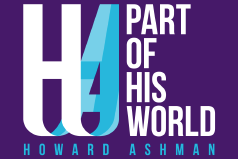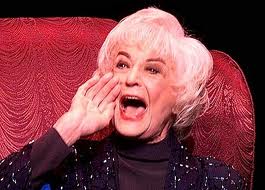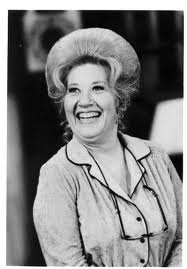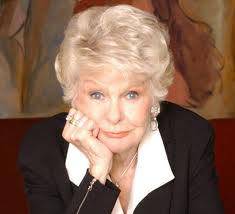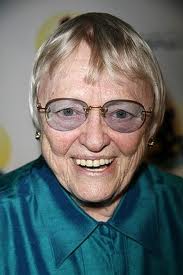John Musker Question Countdown - Number 7
Question Number 7: I know that Howard came to Disney and taught you guys a lot about musical theater but I also know he was very excited about learning how animation works. What did you teach him? Did you have to move him away from thinking like a theater person and if so, in what way?
I’m going to talk both about things Howard brought us from the theater world, and a few things we showed him that were part of “our world.”
One of the areas where we overlapped, but where Howard was not thrilled with our approach, was in the area of voice casting and auditions. On Little Mermaid, we had a casting team out here in LA that mostly did TV and had done work for Disney previously. Howard felt they weren’t serving us as well as they should (the diplomatic choice of words is mine not his. His were rather more cherce.) He felt that we weren’t seeing enough people, for one thing. And he felt that the pool of actor/singers was much bigger in New York and that LA people just generally didn’t have the singing chops necessary. So he suggested that his casting associate Albert Tavares do auditions in New York as well. We were fine with this idea. We only heard these auditions on tape although Howard was present for some, if not all. Out of these NY sessions, we heard both Sam Wright and Jodi Benson. We had seen Jodi in Howard’s play “Smile” and had liked her performance a lot. Howard didn’t “push” Jodi on us. We heard lots and lots of people for the part. But Jodi’s great emotional singing and the teenager-y appeal of her voice sold us on her.
Meantime, auditions continued in LA as well, although with many more candidates coming in. Howard attended these auditions at Disney Feature Animation (in the theatre in our Flower Street warehouse where we made Little Mermaid). It was a bit of an education to see Howard at these auditions. One little tidbit I picked up along the way was that Howard said “pitch” could not be taught. If a singer had pitch problems they couldn’t be unlearned because that means you can’t really hear the mistake. I also heard the term, “back phrasing” for the first time. Back phrasing is a vocal technique where a singer deliberately sings a little either ahead or behind the beat. It was an ability Howard valued and he told me, “Any diva worth her salt does it, and how.”
We had a lot of actors who came in to read who were in the early stages of their careers. Jim Carrey read for Eric. Bill Maher read for Scuttle, as did Michael Richards. Rosanne Barr came in to read for Carlotta the chambermaid, and Howard was so amused by her nasal voice he pulled us aside and said how about letting her read for Ursula? So we did. I am still amused as I recall hearing, “Flotsam, Jetsam, you divine little vipers!” in that distinctive Barr twang. Upon hearing it, though, none of us thought the approach worked very well for Ursula. Mario Van Peebles came in to read for Sebastian complete with dreadlocks he had sported for Jaws 2 or 3. He spoke in a Jamaican patois throughout the audition, even when off mike. Only later did I realize he was not at all Jamaican, despite the dreads. Can’t fault a guy for trying.
Howard could be cranky at times about some actors, that they were self absorbed and their jobs were not all that tough when you came down to it: “Come on, you’re an actor!” Howard marveled at the self-delusion of some stars. I remember him being very amused that Barry Manilow, who wanted to develop an acting career at the time, was upset with his agent for not getting him an audition for the movie Platoon. Howard cackled: “Barry Manilow…Platoon!!” Howard could be fairly dismissive of actors he thought didn’t measure up. I remember after a handsome young guy read for Eric, Howard walked up to me, hands in pockets, and gave me his shorthand review: “CBD…” I looked blank (a look I’ve perfected on a number of occasions) so Howard explained: “Cute, but dumb…”
The casting of Ursula, which I alluded to in an earlier post, was proving to be difficult. We wrote the part originally with Bea Arthur in mind (although with the Joan Collins vampiness I mentioned earlier.) We even described in our script the witch having a basso “Bea Arthur voice.” Arthur’s agent somehow found that so insulting that she refused to let Bea even see the script.
When actors came in to audition, they would do scenes from the film, and for the singing parts, they would prepare a song in the vein of those in our film. Thus we heard many potential Ariels doing Somewhere Over the Rainbow. (Apollonia, Prince’s then girlfriend came in to read, but I don’t think she sang.) If an actor seemed promising, they would be given the song from the film to learn and would do it in a callback. Actually, prior (and subsequent) to this, we had done all our auditions on tape and in a recording studio. Because Howard didn’t need recording quality for his theater auditions we were doing them “Broadway Style.” (A problem that surfaced later when we loved Susan Egan’s audition so much for Meg in Hercules that we wanted to use one of her readings from it in the production track. The problem was that the audition was done in a New York rehearsal hall where jackhammers could be heard outside the open window. Although we tried to have Susan reprise her reading later in the studio, that audition reading had such a unique offhand delivery, we wound up putting the “jackhammer” filter on the take and using it in the final film.)
So, back to Ursula. We had two promising candidates after hearing many, many people, one in LA and one in New York. In LA, Charlotte Rae had done a tremulous reading that we really liked, as did Glen Keane who was doing drawings based on it. In New York, the icon and diva Elaine Stritch came in, and Howard loved her broad take. It sounded like Ursula had a few belts before Ariel swam in. It was an eccentric, loopy reading, a bit like Johnny Depp’s Jack Sparrow. The test now would be how both these actresses performed Howard’s song. So Charlotte did the song out in California, and Howard supervised Stritch’s performance in New York. Unfortunately, as wonderful as Charlotte Rae was, the demands of Howard’s song didn’t suit her voice.
We knew it, we were disappointed, but we awaited word from Howard in New York. The phone call came, but it was not what we had expected. Howard was curt. “Elaine’s out…” What had happened we wondered?
Howard was aggravated. Stritch had reworked the tempo of the song. She was not following his demo in the slightest. She was undirectable. Howard seemed genuinely depressed that someone whose work he so enjoyed, and who seemed the answer to our problems, treated his material so rudely. So suddenly instead of having two great candidates, we had none. Fortunately, Pat Carroll eventually swam to our rescue. With her approach she said was channeling “Maurice Evans doing Tallulah Bankhead.” Pat very much made the part her own. There was one thing we stole from Stritch, however.
When Ursula says, “Life is full of tough choices, idn’t it?” that funny, arch reading of “idn’t” was all Stritch from her audition (we wrote ‘isn’t it?’) As we did when Macy Gray auditioned for Mam Odie in The Princess and the Frog and spontaneously had the character fall asleep in the middle of a sentence, we stole that, too. Thank you, Elaine and Macy.
As far as the flip side of this, with Howard learning things from us there were a few. Howard came to see the value of the “action adventure” elements in the film. They were not part of his vocabulary, and he checked out during those sequences initially. But as the scenes were animated, and he saw it with an audience he came to appreciate the tonal shift and the involvement of the audience (and particularly kids) in those sequences. He came to appreciate some of the “cuteness” that storyboard artists had in their drawings and that the voice actors brought. Initially Flounder’s adenoidal voice made Howard a little cuckoo, but he came to see the charm it had when combined with the storyboards and the animation.
Where we ultimately differed most with Howard, and where he came to realize that film was a different animal than the stage, was in the recording of the material and the shaping of the performances. Howard’s initial approach with the actors was that they “learn their parts” as they would for a stage play. That is, they would construct (or be Svengalied by Howard) a calibrated performance, thoroughly worked out and repeatable eight times a week and one that would stay put even after the play had opened. In animation, by contrast, we tried to impart to Howard that this didn’t really matter. The actor would not be repeating this performance several times a week. In fact, if the actor only gave a reading once that had a particularly appealing quality, that was all that was needed. Spontaneity was much more useful in making the animation, which is by its nature almost the least spontaneous process, come alive. Howard came to see the value in this and embraced the “playful” aspect of this in the studio. He himself began to try a wider variety of readings and interpretations. Howard liked to shape every nuance of a sung performance, but as I recall, he came to understand that with any dialogue scenes in the film, you could still orchestrate the choices in the editing room after “playing” with the material in the studio.
Speaking of the editing room, I am amused when I think back to our arcane way of “picking takes.” In the recording booth, Ron Clements and I just kept a sense that we had heard readings we liked, but didn’t indicate our choices there. Everything that was recorded was transcribed, and later, armed with a cassette tape of all the “takes” (which when I started was actually a pressed acetate, a real record that you would play!) we would listen to them all once again, jumping around to different spots on the tape. We couldn’t hear the different pieces strung together until much later. This process drove Howard absolutely bonkers. It was slow, disjointed, and unwieldy.
Howard said you should have an assistant put all the versions of a certain line back to back so you can compare them all. We were amused by Howard’s frustration and knew his suggestion was just too complicated and unworkable. Flash forward ten years after that. We were doing exactly what Howard had suggested. Now there were digital editing machines, the Avids. Assistants did exactly what Howard had suggested years earlier. They put multiple takes together so you could easily “shop” and compare them. I think of Howard whenever we do this now, Howard in the next world, rolling his eyes and saying, “Guys, I told you the way you were doing it was farcockt!”
